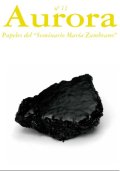Cuerpos amortajados en la luz. La muerte vivificante: J. Lezama Lima, S. Weil, M. Zambrano
Keywords:
Lezama, Weil, Zambrano, Mysticism, Great DeathAbstract
For the mystics who unanimously exalt life in the spirit and reject love of the body and earthly life, voluntary death is the prefiguration of the spiritual experience par excellence. In Christianity, the texts of the masters of ancient monasticism insist on the themes of spiritual martyrdom, the cross, and mystic death. The most frequent idea is that the monk is dead in the present life: the “exercise of death” (melétê thanátou) of Macarius of Egypt, Evagrius Ponticus and John Cassian. The perfect man is unaware of whether he is dead or alive; he is “dead without being dead”. This ascetic exercise of death brought forward reappears in contemporary literature: death as a release, “the great death” (Der grosse Tod, Rilke), “doing nothing in oneself ”, “dying inside” (Zambrano), the paroxysm of total passivity, the “inertia of the corpse”, the “inner death” (Weil), redemptive death, “as a living man I am a dead man” (Lezama Lima) or “I die each minute / of what I love” (Aragon).
Downloads
Published
How to Cite
Issue
Section
License
The authors who publish in this journal agree to the following terms:
- Authors retain copyright and grant the journal the right of first publication.
- Texts will be published under a Creative Commons Attribution License that allows others to share the work, provided they include an acknowledgement of the work’s authorship, its initial publication in this journal and the terms of the license.



